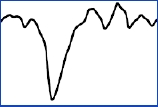Evoked Potential Testing
Evoked Potential Testing
Your doctor may order evoked potential tests to check the signals your brain and spinal cord (parts of your nervous system) get from other parts of your body. These tests are also used to check for vision, hearing, and sensory or motor problems.
What is evoked potential testing?
There are several types of evoked potential tests:
Visual
Brainstem auditory
Motor
Somatosensory
Your doctor may order any or all of these tests to check the signals your brain and spinal cord get from other parts of your body. These tests show if nerve impulses are conducting at the correct speed and intensity. The signals are responses to what you see, hear, or feel during the tests. While you are being tested, the technologist will look at wavy lines (waveforms) on a screen or on paper. These lines show the activity in your brain and other parts of your body. These waveforms will be studied to help determine your test results. They can help your doctor diagnose and treat you. For instance, in people with multiple sclerosis, the evoked potentials are slowed down because they don't conduct normally. These tests are also used during surgery to help the surgeon to safely do some operations.
The visual evoked potential test may be used to check for vision or visual processing problems.
The brainstem auditory evoked potential test may be used to check your hearing and auditory processing.
The motor evoked potential test may be used to test motor function signals from the brain and spinal cord. This is especially helpful in spinal surgery.
The somatosensory evoked potential test may be used to check the nerve pathways between the spinal cord and brain.
My next appointment is:
Updated:
June 08, 2018
Sources:
Neuromonitoring in surgery and anesthesia. UpToDate.
Reviewed By:
Hanrahan, John, MD,Jasmin, Luc, MD
